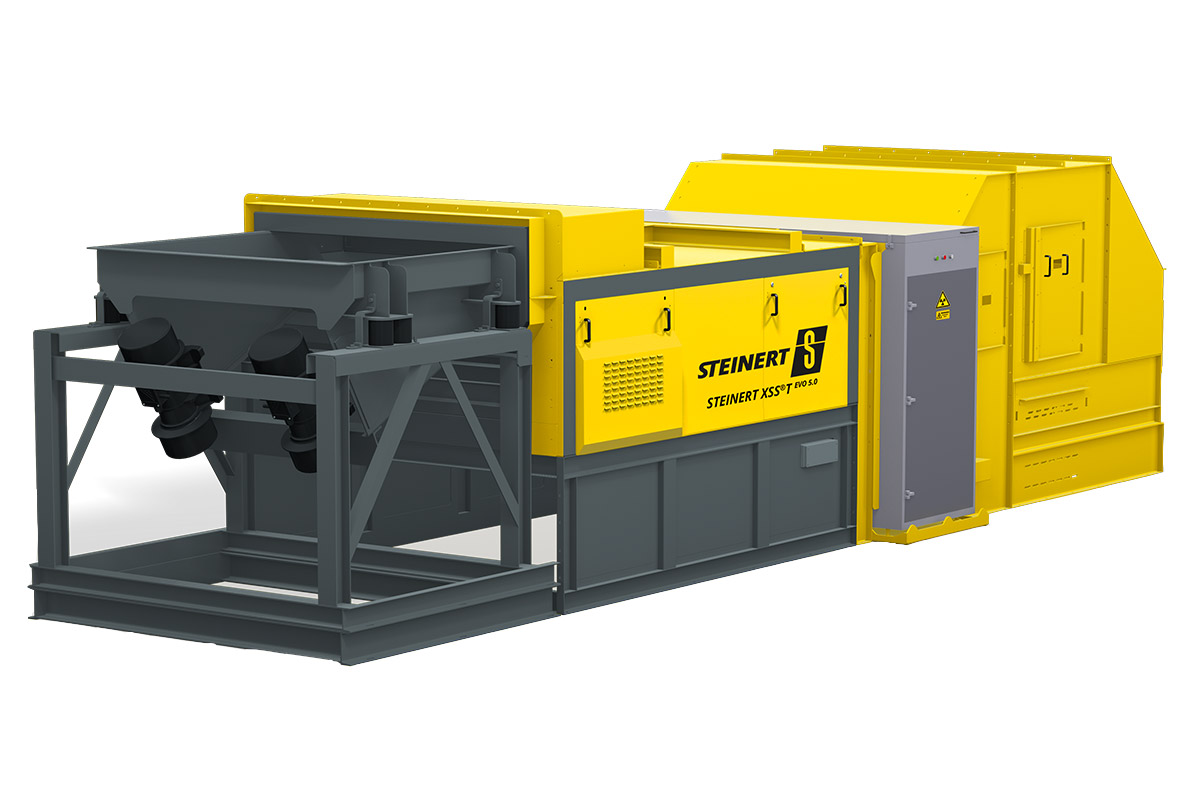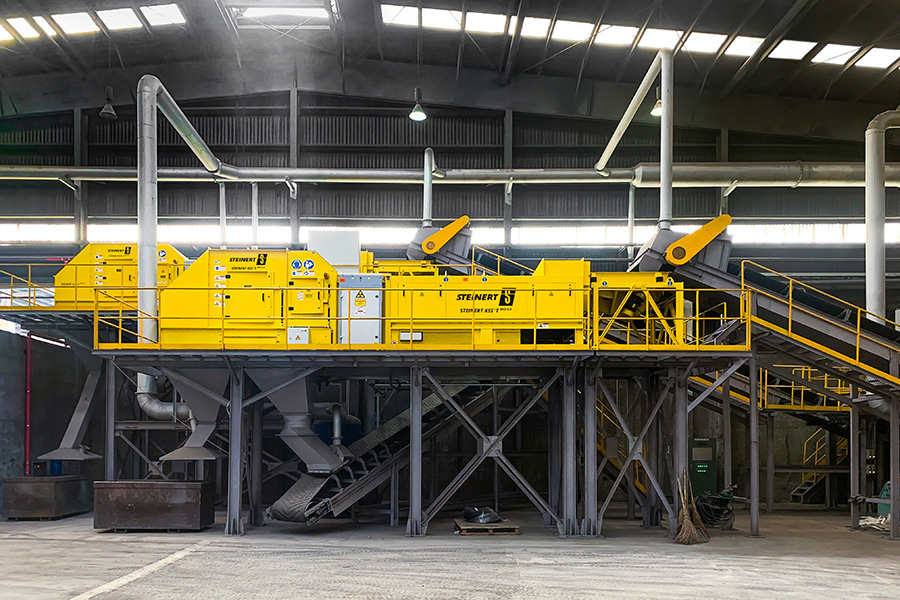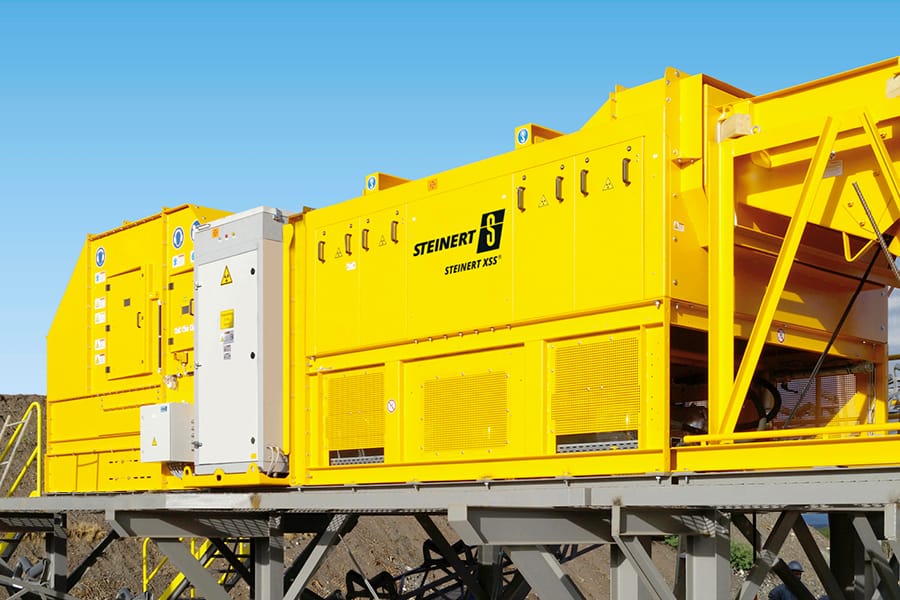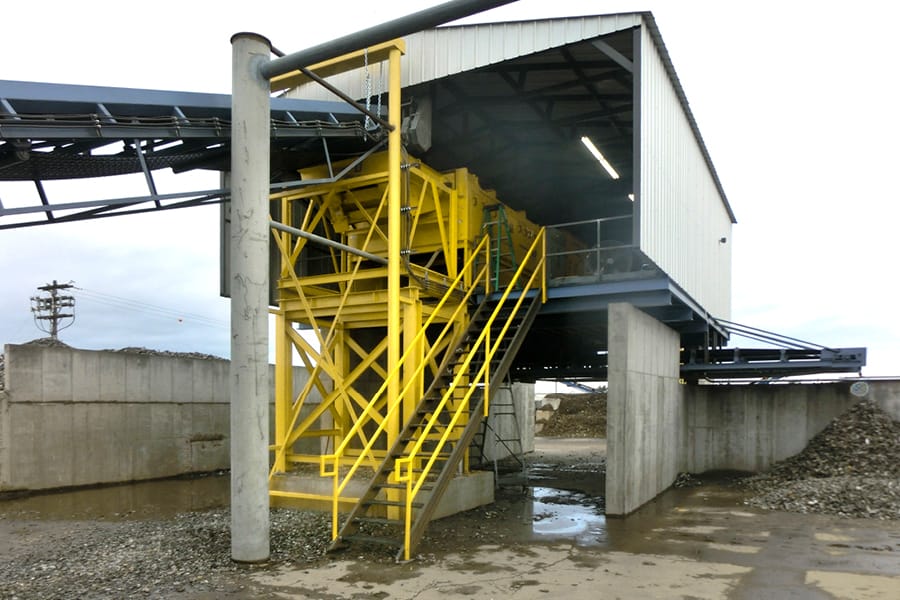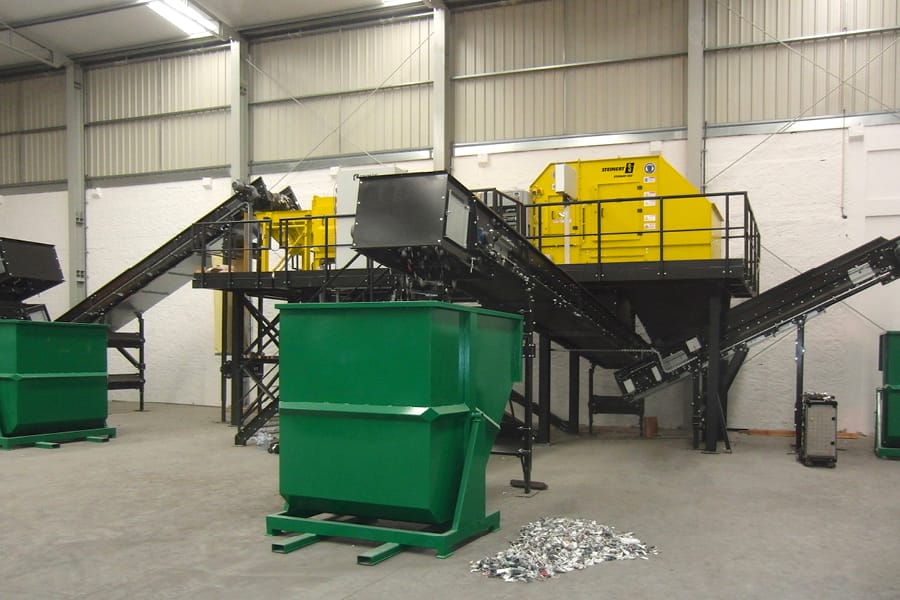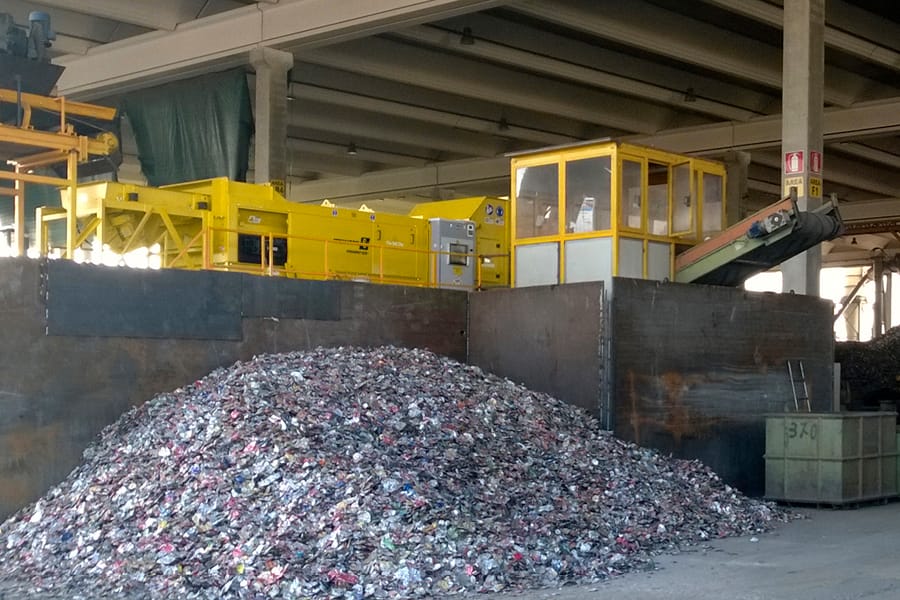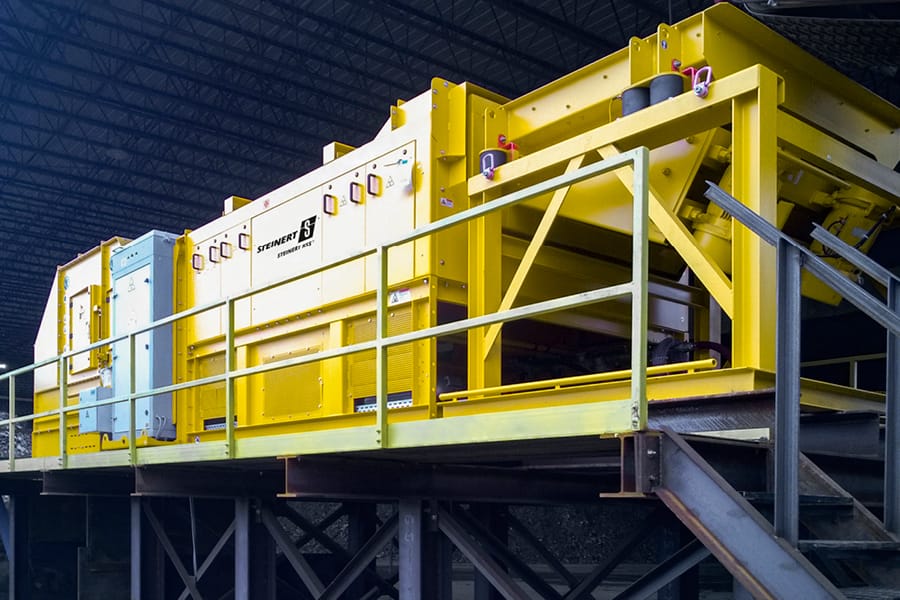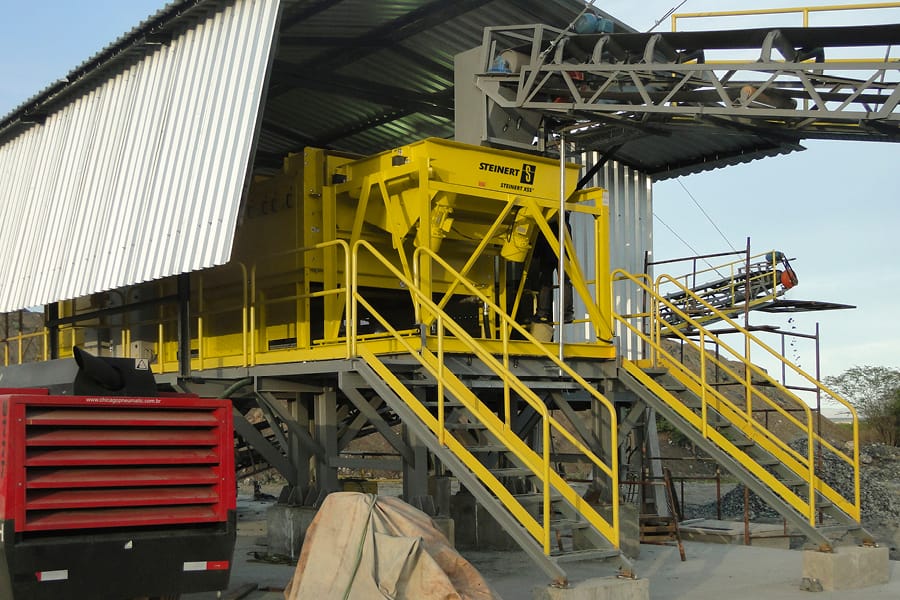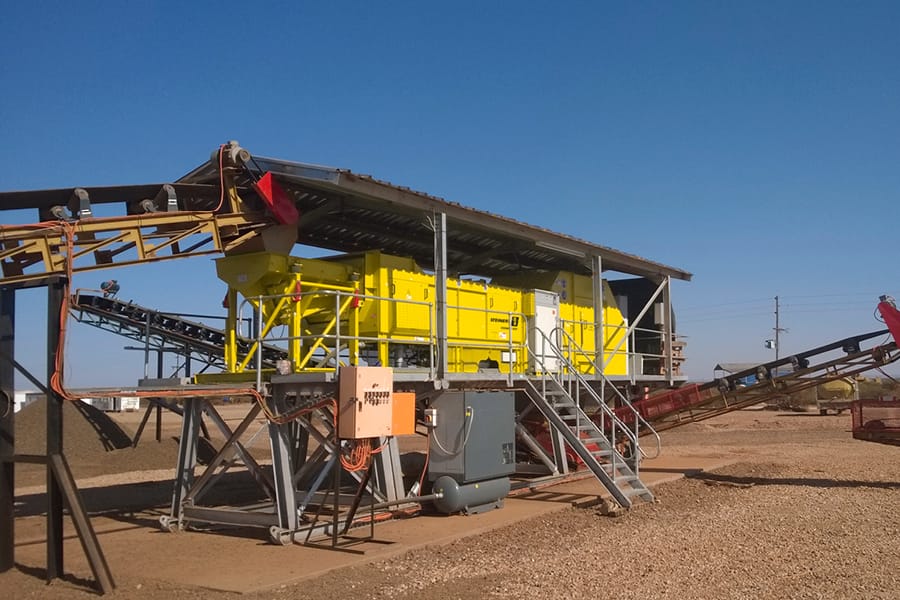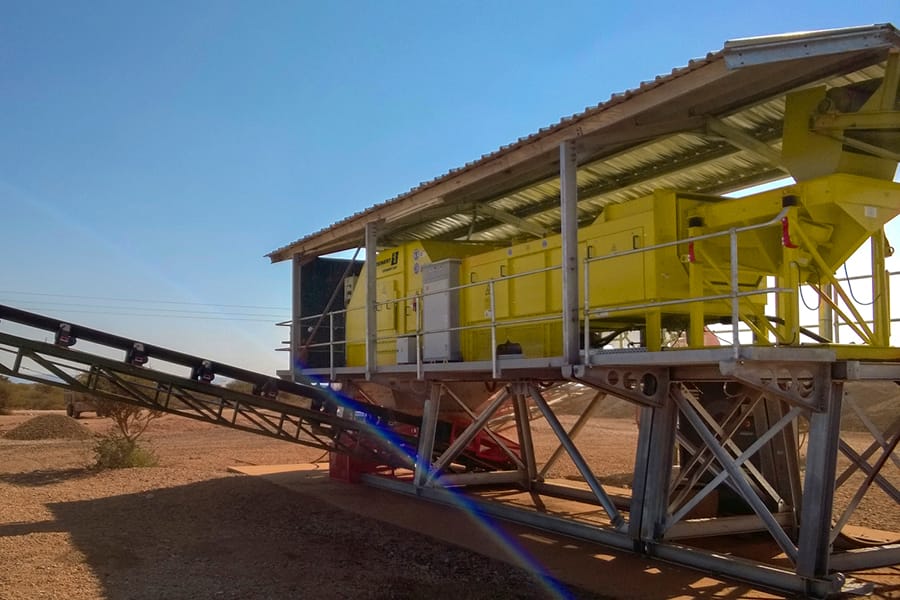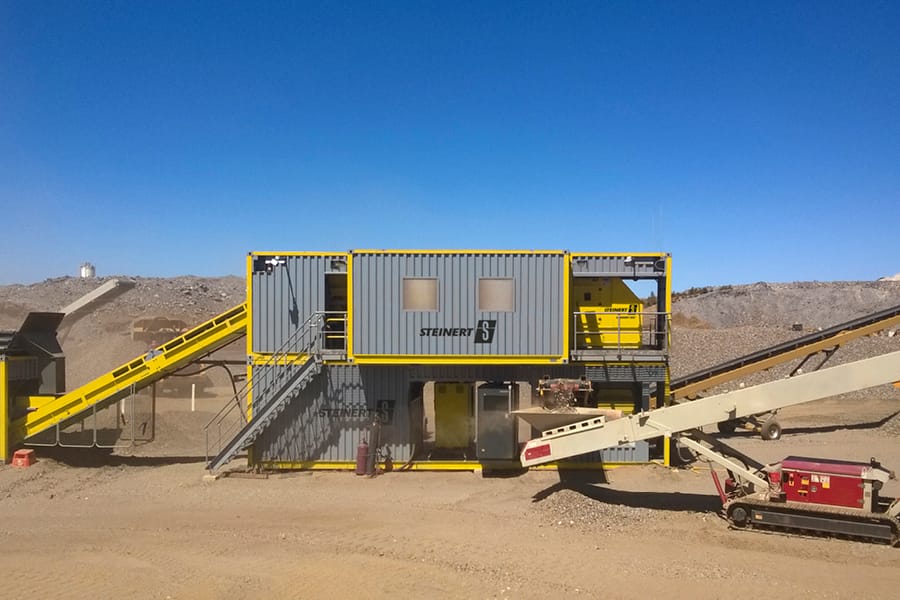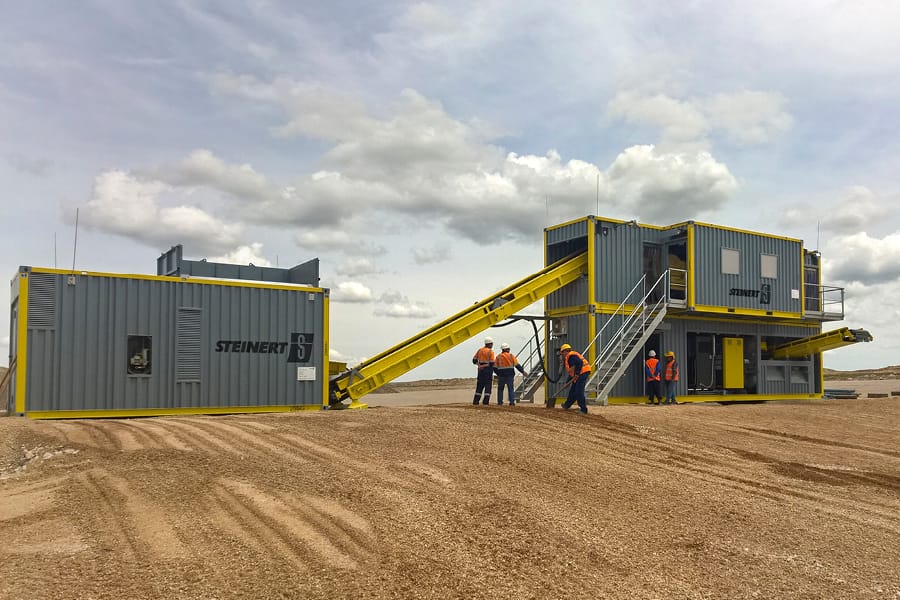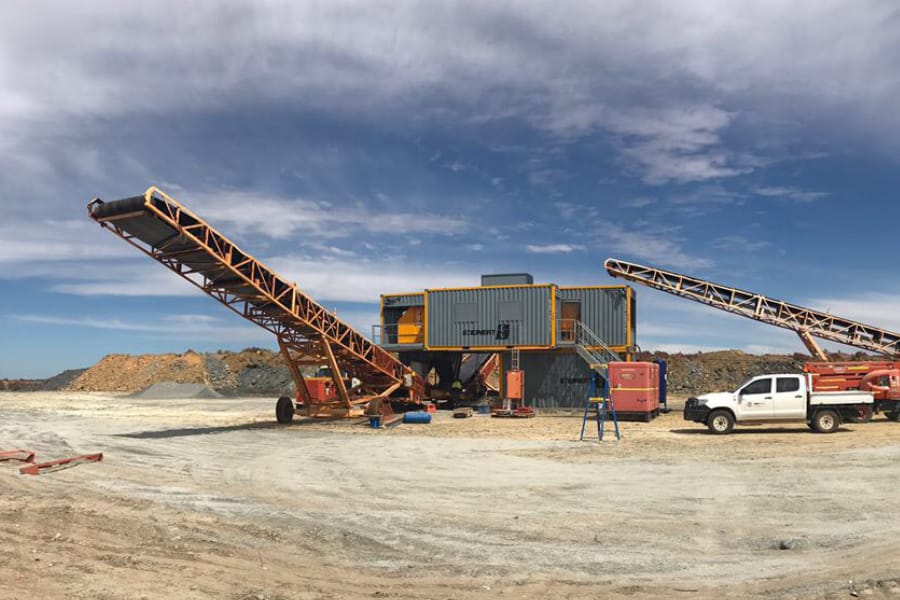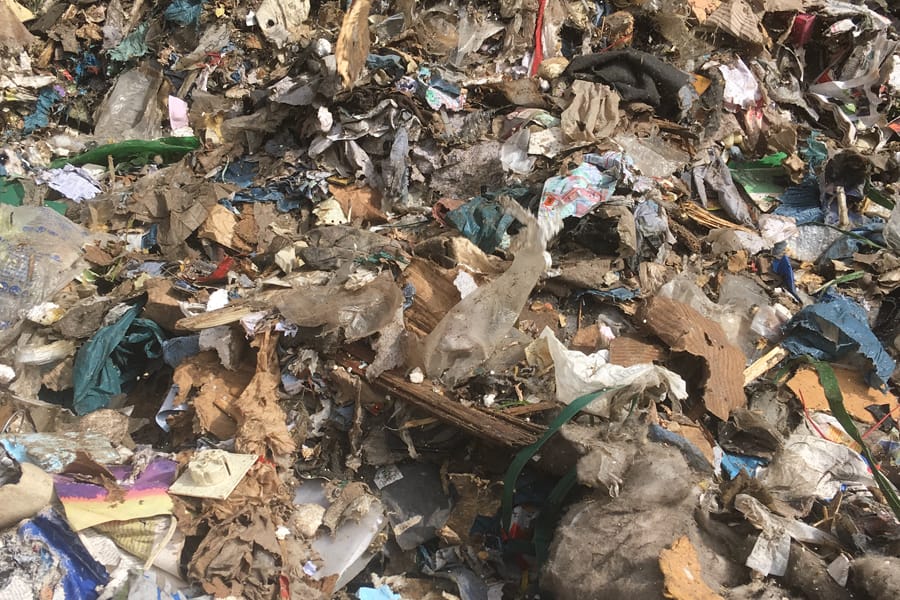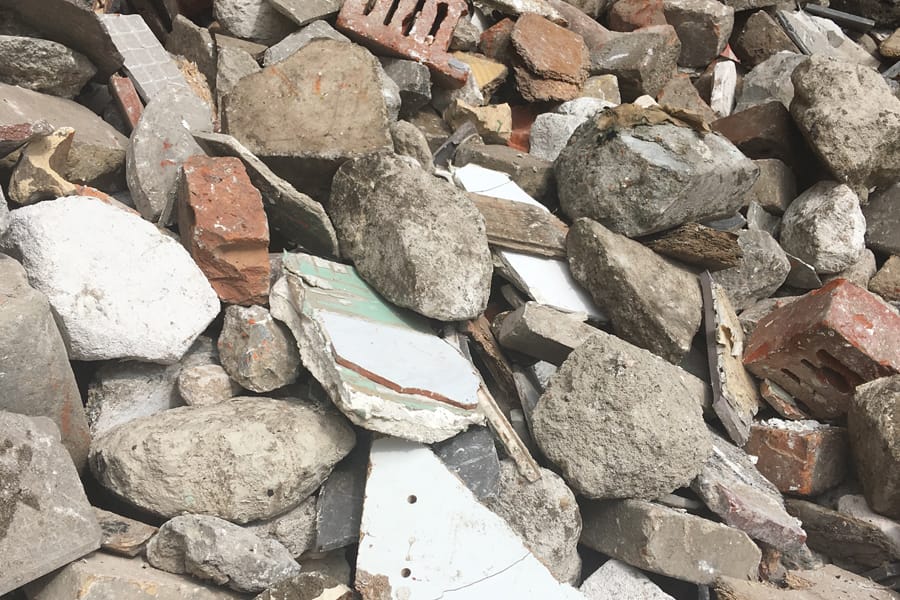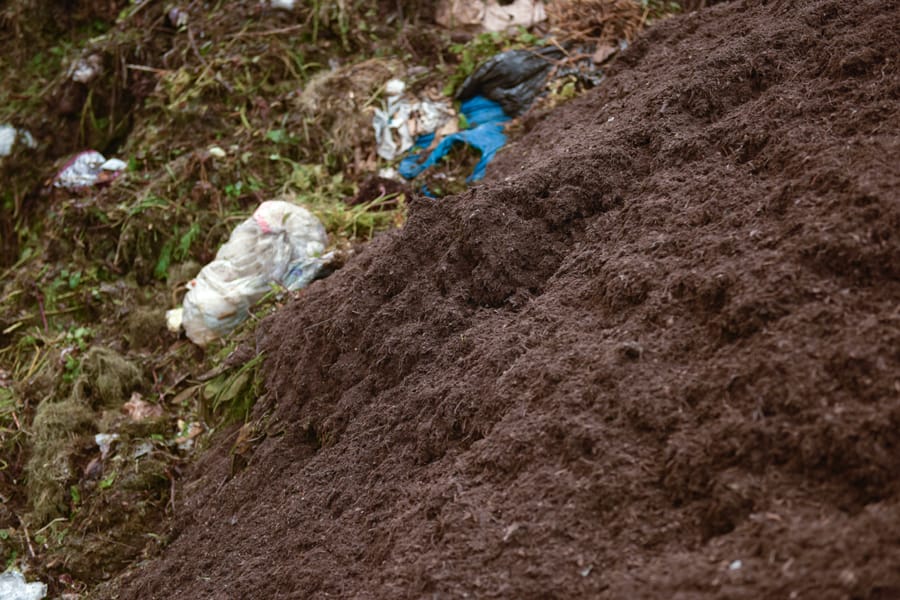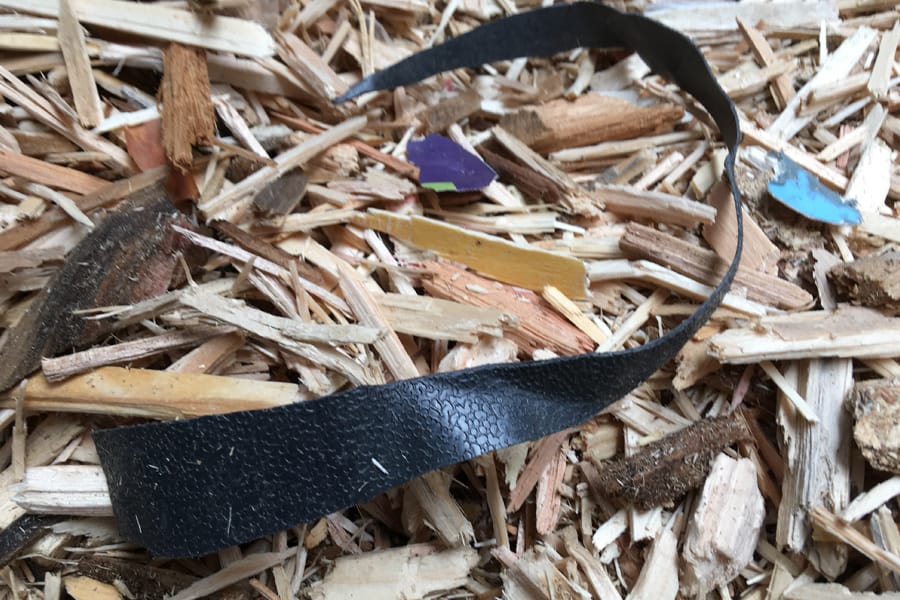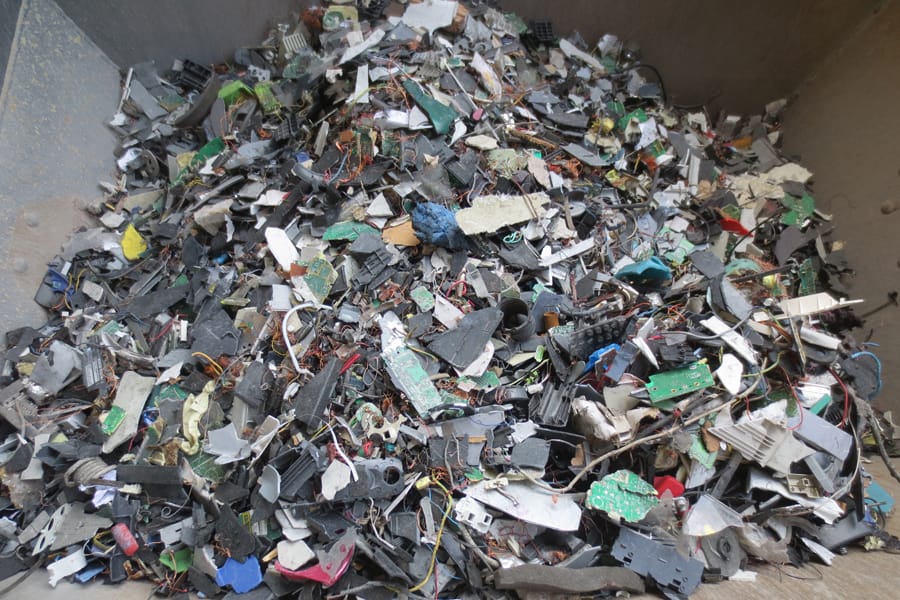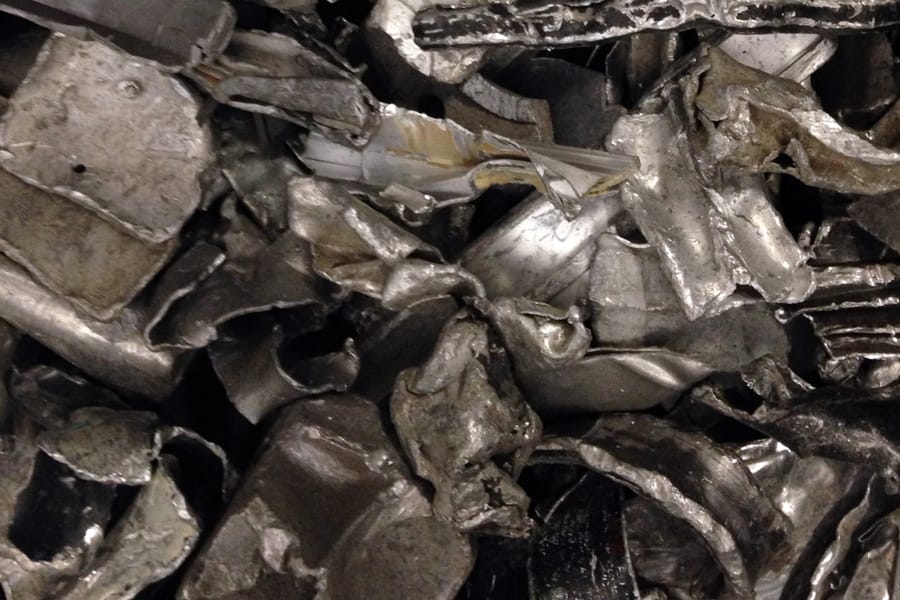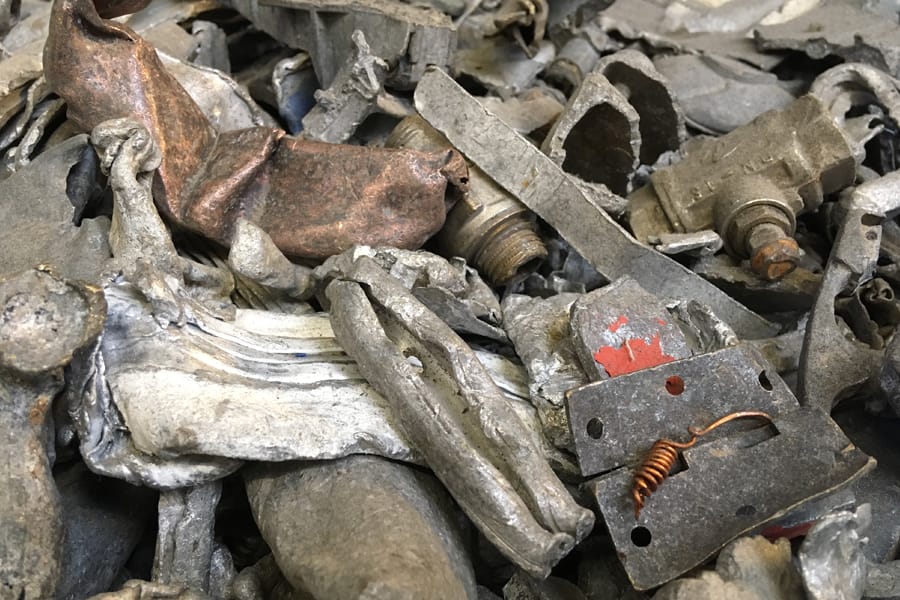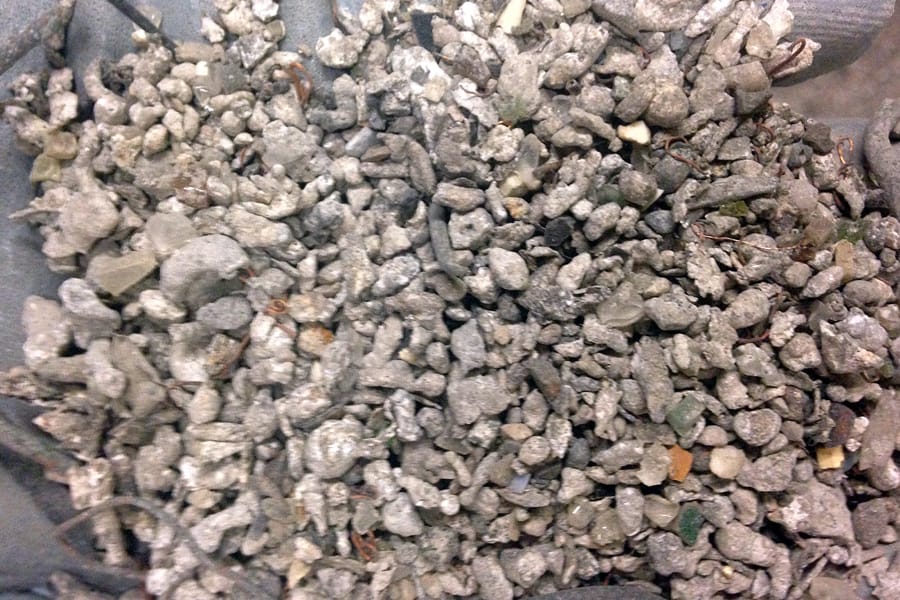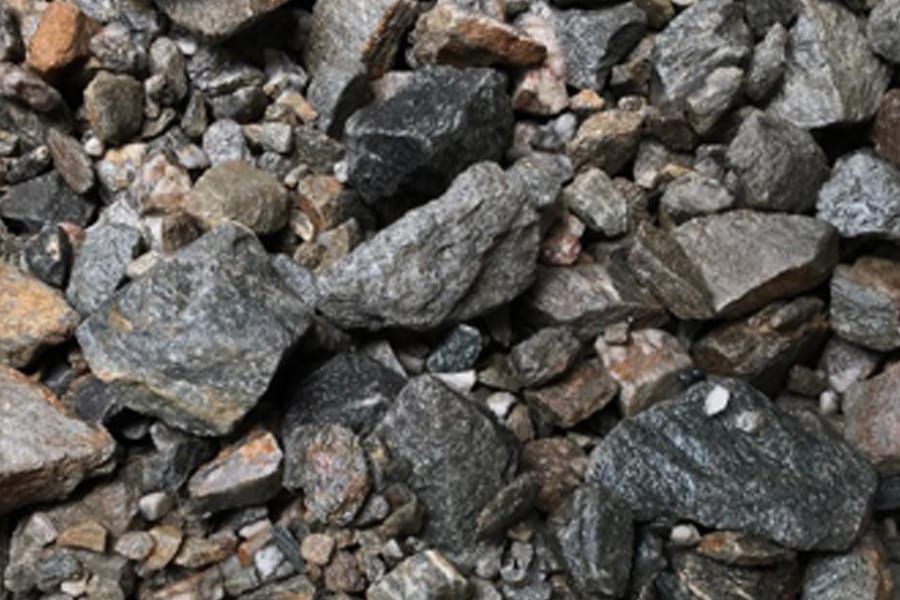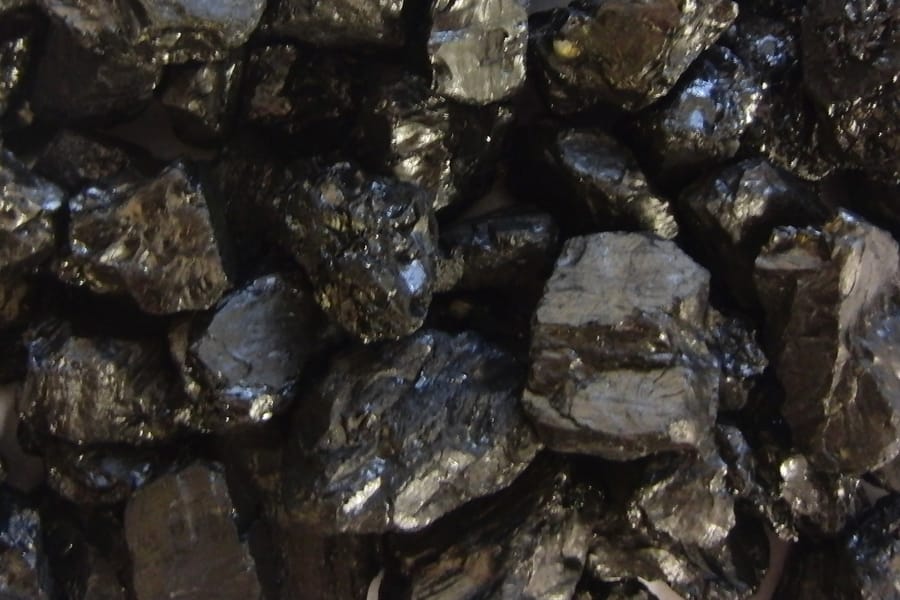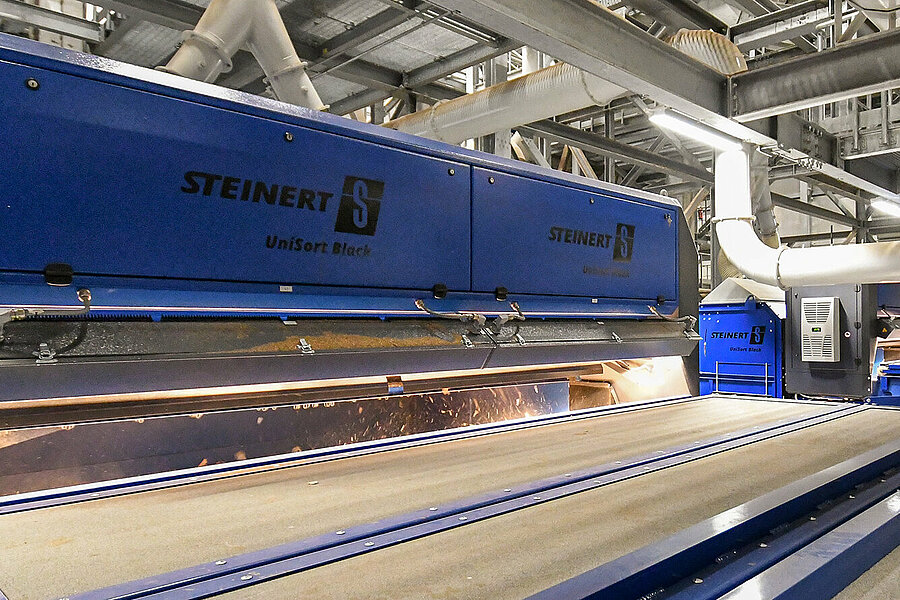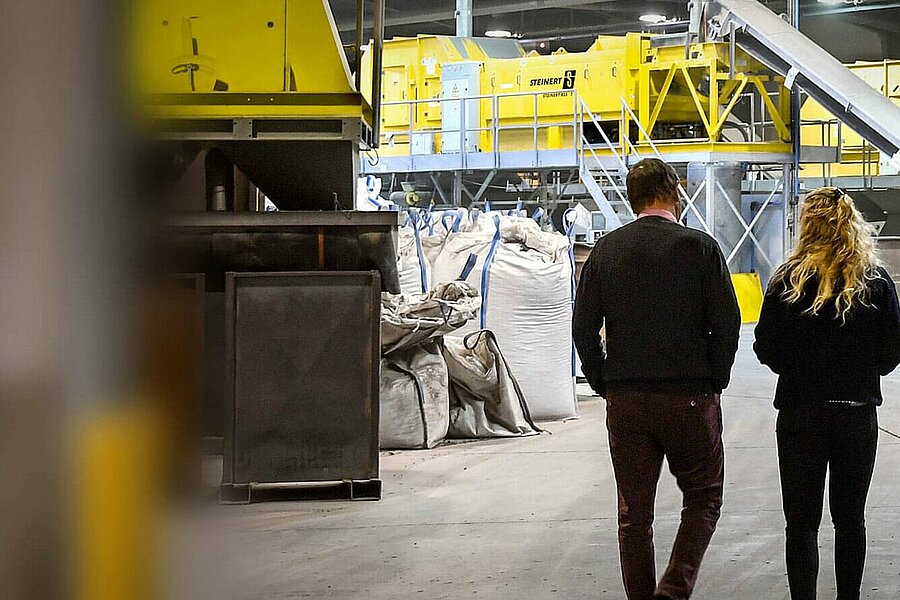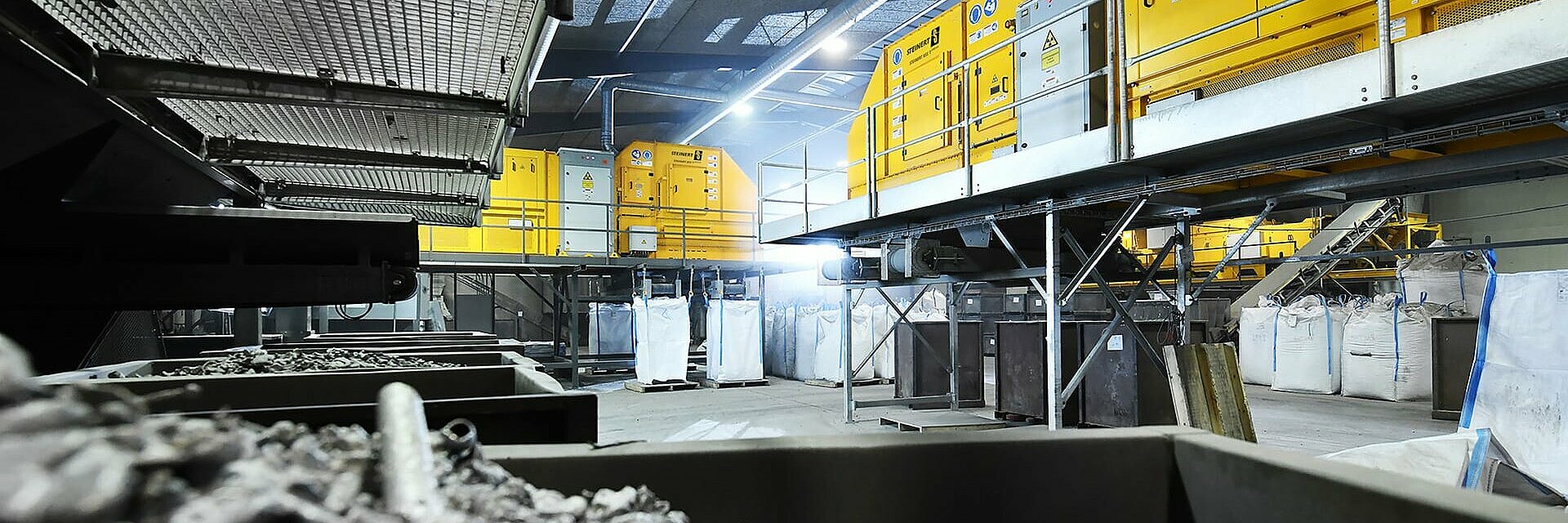
STEINERT XSS® T EVO 5.0
Density sorting with the STEINERT XSS T EVO 5.0 – via x-ray transmission under the dual-energy principle
For a wide range of sorting solutions and a high level of operational reliability
The STEINERT XSS T EVO 5.0 x-ray sorting system is used for dry density sorting of bulk materials. A transmitting procedure detects material-dependent differences in the absorption of x-rays then classifies and uses them for sorting into density classes.
Steinert customers benefit from the continuous advances made to the sorting machine - especially from the following features in the new EVO 5.0 generation:
MDE stands for Multilayer Data Evaluation - The function takes the place of particularly challenging sorting tasks, such as magnesium detection. Or it solves the issue of detecting and distinguishing composite objects and permits high-resolution object recognition with the classification of various detection tasks running in simultaneous.
AXM - Automatic x-ray monitoring and calibration of the x-ray sensors help achieve consistently high detection and sorting quality. This produces consistently high levels of detection and sorting quality over the entire life of the x-ray components.
HR valve pitch - The high-resolution valve pitch of 6.25 mm sorts even fine material to high levels of precision and thereby improves the sorting performance and cost-effectiveness of processing fine material.
Auto X clean - In the new generation of machines, the X-ray scan area is cleaned automatically. This results in consistently reliable detection and significantly reduces the amount of manual cleaning needed.
How does detection with x-ray transmission work?
The extent of absorption of x-rays depends both on the material density and on the thickness or the radiated path of an object. The larger the atomic mass and the thicker a material part, the more radiation will be absorbed. The absorption in the material to be sorted is measured at two different energy levels to compensate for the influence of the object thickness. The "dual-energy procedure" uses software to determine the material-specific absorption and thus conclude the density of the material. The radiation passing through the objects enables both the conclusion of an average density for an object and the identification of inclusions in rocks or clumps of material. The main advantage of X-ray transmission is that its transmissive detection makes the system insensitive to surface soiling and enables the detection of inclusions. This is the case in mining for example, with pyrite accumulations in chunks of ore or in recycling with heavy metal inclusions in pieces of aluminium.There is also the option of masking materials of low density and thus significantly increasing the throughput in certain applications and removing impurities from a closed supply flow (e.g. metals from waste wood).
Your benefits:
- XSS T = x-ray sorting system with transmission
- Uses the dual-energy principle for detection, discerns material-specific differences in density
- Grain size range: 05 – 200 mm
- Working widths: 1,000 mm, 1,200 mm, 2,000 mm
- Semi-mobile STEINERT XSS T EVO 5.0 with 1,000 mm working width in a 40’ container
The sorting process in detail: separation, detection, sorting
A vibration conveyor is used to carry the sortable material on an acceleration belt, which breaks the supply flow down in the supply direction thus achieving material separation. The feed material is transported through the scanner area in a position on the conveyor belt, whereby the x-ray source is positioned below the conveyor belt and radiates a narrow area of it. The proportion of radiation not absorbed by the material is measured by detectors in the beam above the conveyor belt. The variation between initial and measured radiation can be used to reveal differences in density between or within individual objects. Each individual object is subsequently classified according to application-related criteria. Should the decision to sort be positive, the relevant object is deflected from the discharge parabola using a short, targeted blast of compressed air, transported by a separating splitter and thus separated from the remainder of the material flow.
The semi-mobile variant
One special version of the STEINERT XSS T EVO 5.0 is a semi-mobile variant intended primarily for mining. In this case, our x-ray sorting system with 1 m working width is installed in a 40' container. A further 40’ container contains the operating room with controller. The focus of the semi-mobile STEINERT XSS T EVO 5.0 is on mineral processing, although it can also be used in other sectors. Please contact us and we will be happy to advise you.




